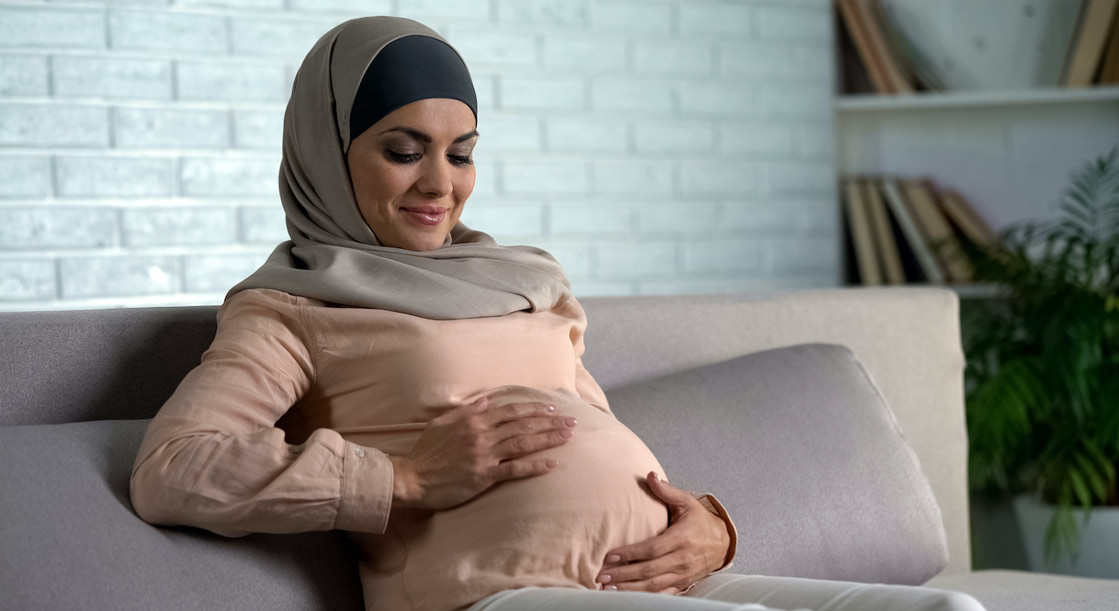Are you trying for a baby? Confused by all the fertility terms and abbreviations? Need a fertility glossary to cut through all the jargon?
Dr Anu Chawla, Fertility Consultant at The Fertility & Gynaecology Academy says: “We understand that it can feel overwhelming to read fertility and IVF terms and abbreviations, and be unsure as to what they mean. We want to guide you through the assisted conception process in plain English so you feel comfortable and confident that you fully understand all aspects of your fertility journey.”
Read our handy fertility glossary here:
A
Adenomyosis – A disorder in which endometrial tissue grows into the muscular wall of the uterus, thickening it and distorting the blood vessels, adenomyosis is associated with fertility issues.
Anti-mullerian hormone (AMH) – An essential sex hormone with functions that vary according to sex and age. However, in fertility medicine you’ll most often hear AMH mentioned in reference to a woman’s ovarian reserve. AMH is made by the follicles in a woman’s ovaries and its key job is to help sustain immature eggs. Therefore, measuring AMH levels is one of the most popular tools fertility clinicians have in estimating how many eggs a woman has remaining.
Assisted hatching – This is an extra step that can be taken in some IVF procedures, particularly in cases of previous IVF failure or where the mother is older. It works like this: Embryos are covered in a shell-like layer of cells named the zona pellucida. In order to implant in the womb and become a pregnancy, the embryo must escape this shell. Assisted hatching is when IVF experts help the embryo to break free (‘hatch’) from its hard shell by making a tiny hole in the zona pellucida prior to its transfer into the uterus.
Asthenozoospermia – When a man has sperm with low motility (also known as ‘slow-moving sperm’).
Antisperm antibodies – Antisperm antibodies are made when the immune system mistakes the sperm in a man’s semen for an invader and attacks it, killing or harming it. Antisperm antibodies are uncommon but can be present in both men and women, and can make conception difficult.
Azoospermia – When there is no sperm in a man’s seminal fluid.
B
Blastocyst – A fertilised egg (embryo) that has been developing for 5-7 days. During implantation, the blastocyst is the fluid-filled orb that attaches itself to the wall of the uterus.
Blastocyst transfer – When a fertilised egg (embryo) approximately 5 days old (a blastocyst) is transferred into a woman’s uterus by a fertility specialist.
C
Clomiphene citrate – A medication that can stimulate your ovaries’ production of egg follicles, as well as ovulation (when the ovary releases an egg).
Cryopreservation – Freezing sperm, eggs or embryos to be stored for use in the future.
E
Endometriosis – A disorder in which tissue of a woman’s womb lining (endometrial tissue) grows outside of the womb.
Egg collection – A key stage of an IVF cycle, egg collection is when the eggs produced following hormone-stimulated ovulation are retrieved from the woman. This procedure is done either under sedation or general anaesthetic.
Embryo transfer – This is when, after fertilisation of the eggs and sperm in the lab (‘in-vitro fertilisation’), the fertility specialist places the embryos into the woman’s uterus.
F
Follicle stimulating hormone (FSH) – is crucial to a woman’s menstrual cycle and fertility. The ovaries are home to follicles – tiny fluid-filled sacs that house undeveloped eggs – and FSH helps to trigger their growth prior to ovulation. In men, FSH helps to generate sperm.
Follicles – Fluid-filled sacs in the ovaries where eggs grow and develop.
Follicle loss/follicular loss – The decrease of a woman’s egg reserves through reproductive ageing.
Follicle tracking/follicular tracking – When fertility doctors conduct a series of ultrasound scans to predict your time of ovulation.
Frozen embryo replacement/transfer (FER/FET) – When previously stored frozen fertilised eggs are thawed and transferred into a woman’s uterus.
G
Gametes – Sperm and eggs.
Gonadotropins – Hormones (such as FSH and LH) that govern testicular and ovarian function and are imperative for reproduction.
H
Human chorionic gonadotropin (HCG) – An essential pregnancy hormone generated by a woman in early pregnancy, HGC assists in the ongoing creation of progesterone. In fertility treatment, 36 hours prior to egg retrieval, a woman is given HCG to mature her eggs.
Hydrosalpinx – When fluid builds up in a blocked fallopian tube.
Hypothalamus – A key gland located in the brain that governs hormonal changes in the body.
Hystero contrast sonography, aqua scan, or saline installation sonography (SIS) – An ultrasound scan in which fluid is injected into the woman’s uterus to assess the structure of her uterine cavity and fallopian tubes.
Hysterosalpingogram (HSG) – An x-ray to assess the womb and fallopian tubes.
Hysteroscopy – An assessment of the inside of the womb, with the use of a slender telescope that holds a light and a camera on its end (a hysteroscope).
I
Implantation – When a fertilised egg (embryo) embeds itself in the lining of the uterus.
In-vitro fertilisation (IVF) – When a woman’s eggs are taken out and fertilised with sperm in a lab, and then placed back into her womb to develop. Read more about IVF.
ICSI (Intra-cytoplasmic sperm injection) – ICSI is an option when there are problems with the male partner’s sperm (for example low motility), or for couples that have experienced previous IVF failure or poor fertilisation. It is a process similar to IVF, except that in the lab the sperm is injected straight into the egg.
Intracytoplasmic morphologically-selected sperm injection (IMSI) – This is a step that can be taken in ICSI (see above), in which the sperm are viewed under a very powerful microscope and the highest-quality sperm are selected for injection.
Intrauterine insemination (IUI) – An assisted reproduction technique also known as artificial insemination, whereby sperm that has been washed and selected for quality is placed directly into the woman’s uterus when she is ovulating, using a catheter. Read more about IUI.
L
Laparoscopy – Also known as keyhole surgery, in this procedure a surgeon creates a little incision in the belly, inserting a camera instrument inside to look at the uterus, fallopian tubes and ovaries.
Luteinising hormone (LH) – This is a hormone produced by the brain’s pituitary gland. In men, it helps to make testosterone and therefore sperm. In women, it helps to make oestrogen and progesterone and is vital to ovarian function.
O
Oligozoospermia – Low sperm count (abnormally low ratio of sperm in a man’s semen).
Oligoasthenoteratozoospermia (OATS) – Fertility clinicians use this term when all three of these sperm abnormalities are present: low sperm count (Oligozoospermia), low sperm motility (asthenozoospermia), and abnormally-shaped sperm (teratozoospermia).
Ovarian drilling – A procedure that may be suitable for women with polycystic ovarian syndrome (PCOS). A surgeon drills little holes in the ovary to lower the number of cysts, in order to try to regulate menstruation and make conception more likely.
Ovarian hyperstimulation syndrome (OHSS) – An excessive reaction to fertility drugs (usually injectable hormones in IVF) in which the ovaries become overstimulated, swollen and painful.
Ovulation – When an ovarian follicle releases an egg. Read more about ovulation.
Ovulation induction – The use of fertility medications to stimulate the ovaries to release one or more mature eggs (ovulation).
P
Percutaneous epidymal sperm aspiration (PESA) – A procedure in which sperm cells are taken directly from the epididymis using a needle. (The epididymis is a thin tube attached to both of the testicles, where sperm are stored and finish maturing.) This procedure may be employed for men who have fertility issues caused by a blockage preventing the sperm from being ejaculated.
PICSI (Physiological intracytoplasmic sperm injection) – The same process as ICSI (see above), except that before injection into the egg, the sperm is tested with a substance called Hyaluronan to determine the best quality sperm for fertilisation. Read more about PICSI.
Polycystic ovarian syndrome (PCOS) – A hormonal disorder affecting how the ovaries work, PCOS can lead to problems with ovulation and an excess of ‘male’ hormones, making conception difficult.
Pre-implantation genetic diagnosis (PGD) – The analysis of embryo cells in a laboratory, to identify a specific chromosome defect or genetic disease that has a high likelihood of being passed from parent to child.
Pre-implantation genetic screening (PGS) – The same process as PGD (see above), but Pre-Implantation Genetic Screening analyses embryo cells to look for any potential genetic abnormalities when there are no specific inherited disorders to suspect.
Premature ovarian failure – When the ovaries stop making follicles before a woman turns 40.
Progesterone – A female hormone that is vital to a woman’s menstrual cycle and capacity to carry a baby, progesterone performs a number of key functions including preparing the womb for implantation and sustaining the pregnancy.
T
Teratazoospermia – High numbers of abnormal sperm in a man’s semen.
Testicular sperm aspiration (TESA) – Sperm is retrieved straight from the testicles using a needle, before IVF/ICSI. It may be employed for men who have an absence of sperm in their semen (azoospermia) because of a blockage that stops sperm from being ejaculated.
Testicular sperm extraction (TeSE) – A procedure that may be suitable for men without sperm in their ejaculate, with TeSE a small incision is created in the testis, to take a biopsy from which sperm can hopefully be extracted. It can be performed either with sedation or without. Sometimes TeSE is timed to coincide with a female partner’s egg retrieval, but not always. Most often, patients choose to freeze any recovered sperm for future IVF/ICSI treatments.
At The Fertility and Gynaecology Academy, we do much more than Fertility Glossaries. With the UK’s leading fertility doctors and state of the art technology, we’ve helped innumerable couples who’d all but given up hope to finally birth a baby of their own. We are proud of our success rates.
Hopefully our handy fertility glossary has demystified the jargon for you. But to find out more about how we can help, call The Fertility & Gynaecology Academy now on 020 7224 1880 or email info@fertility-academy.co.uk







